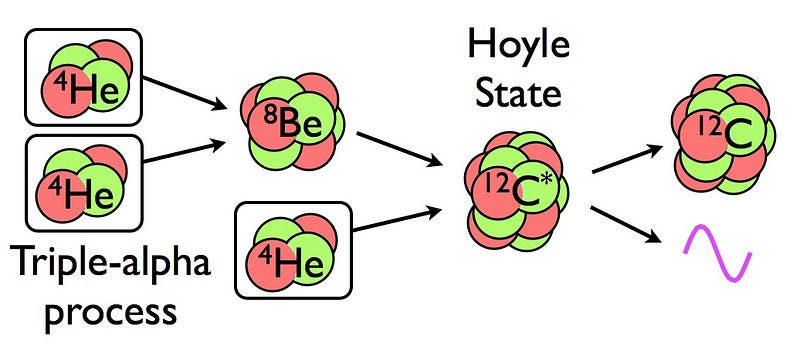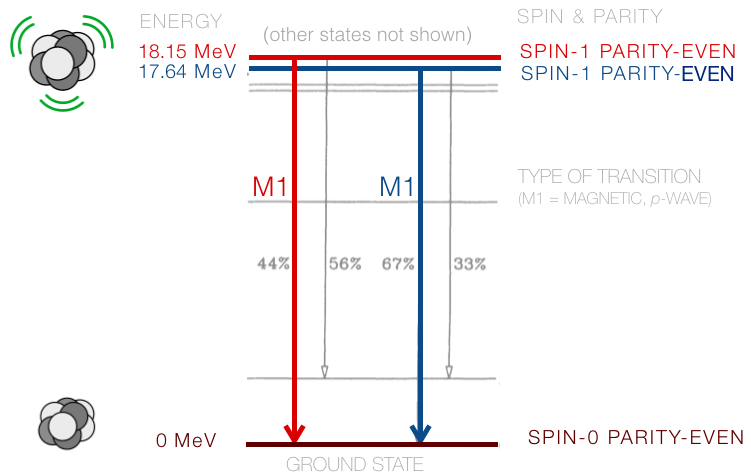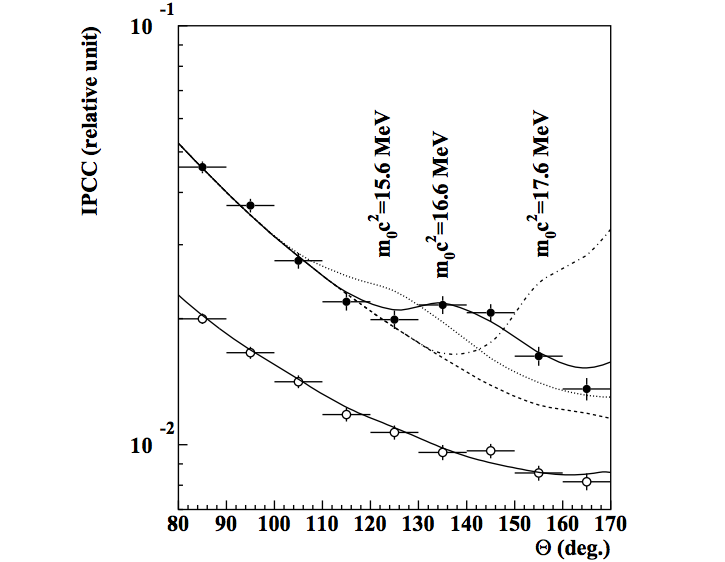Fifth fundamental force: fact or fiction?

The strong, weak, electromagnetic and gravitational forces probably aren’t all there is. Did we just find evidence for a fifth?
“A careful analysis of the process of observation in atomic physics has shown that the subatomic particles have no meaning as isolated entities, but can only be understood as interconnections between the preparation of an experiment and the subsequent measurement.” –Fritjof Capra
When it comes to physics, the Standard Model of elementary particles, encompassing the electromagnetic, strong and weak forces, successfully explains every particle interaction we’ve ever observed in colliders and detection chambers. Combine that with General Relativity, our theory of gravitation, and all the known particles and their interactions can be successfully explained. That means there are:
- no particle-particle collisions
- no particle decays
- no particle/antiparticle productions or annihilations
- or any other scattering phenomena
that cannot be fully explained by those four forces. Sure, there might be phenomena that aren’t accounted for — the matter/antimatter asymmetry, the existence of dark matter, the lack of strong CP-violation or dark energy — but for the known particles we’ve observed, the Standard Model plus General Relativity explains it all. Or it did, rather, until a 2015 experiment from Hungary saw something funny in a decay of a rare, short-lived element: beryllium-8.

Beryllium-8 is incredibly important in building the heaviest elements in the Universe. Stars like our Sun fuse hydrogen into helium, but will go no further than that up the periodic table so long as there’s hydrogen in the core to fuse. When it runs out of hydrogen, though, the core will contract and heat up, and in many stars — including our own — it will reach high enough temperatures to begin fusing helium into carbon. But in order to do that, there needs to be an intermediate step: fuse two heliums into Be-8, and then add a third one to get up to carbon. You only have an extremely short time to work with this, however, because Be-8 decays back into two helium nuclei after only about 10–17 seconds, meaning you have an incredibly short time to get to carbon. Only then can you go higher.

In the laboratory, we can create beryllium-8 by bombarding lithium-7 with protons, creating that short-lived state. We can even, through this process, create beryllium-8 in an excited state, ensuring that beryllium-8 won’t just decay into two helium nuclei, but will also emit a high-energy photon during the decay process. That photon can itself spontaneously create an electron/positron pair because it’s so high in energy, with a very specific opening angle between the electron and positron tracks due to energy/momentum conservation.

What you’d expect to see is that there will be a spectrum of these opening angles, decreasing as the angle got larger and larger. But instead, what the Hungarian team saw in 2015, led by scientist Attila Krasznahorkay, is that there’s a surprising “bump” in the data at an angle of 140º of relative separation. And the easiest way to get a “bump” is to, in addition to a photon, allowing a new type of particle — a massive boson — to get in on the action and contribute to these electron/positron signals.

About two weeks ago, the internet went crazy when Jonathan Feng et al.’s paper was published, fitting this experimental result with a new type of particle, a massive “proto-photic” (because it behaves like a photon) boson at 17 MeV/c2, that would need to interact through a new, fifth force. “If true, it’s revolutionary,” Feng said in a release by UC Irvine. But there’s a lot of work that needs to be done to confirm that it’s true. For one, the Hungarian team’s results need to be replicated, and this is a team that’s been notorious over the years for claiming new particles that have gone away with more data. For another, Feng’s idea of the protophotic X-boson would be a bizarre, short-range interaction that only coupled to a small sub-set of the known particles. According to coauthor Timothy Tait, “There’s no other boson that we’ve observed that has this same characteristic. Sometimes we also just call it the ‘X boson,’ where ‘X’ means unknown.” And for another, the interaction must be incredibly weak in a particularly finely-tuned way in order for this particle to have evaded detection for the past 65 years. It’s far more likely that theorists are building a model to chase a phantom particle that doesn’t really exist.

But if it is a new particle, it could change everything. The rest energy of the particle — 17 MeV/c2 — along with its other properties, is really interesting. It has a spin of 1, indicating it’s a boson-like particle. It travels far enough that its lifetime of 10–14 s can be measured, telling us this is a weak decay, not an electromagnetic one, meaning it’s not a bound state of leptons. It can’t be a combination of two quarks, since it’s too light; it would have to be at least 10 times heavier for that explanation to fly. If this particle is real, it’s likely a brand new type of particle, one not found in the Standard Model at all.

But it probably isn’t. It’s probably an error with the experimental setup, or with the cuts used by the experimental team. The best way to test it isn’t going to come from a theory group, but rather from an independent experimental group that replicates the experiment to higher precision and smaller error bars. They’l need to detect whether the excited state of beryllium-8 really requires an additional component beyond a photon to explain its decays. And then, if it does, we’ll have discovered something new and remarkable in physics, but if not, it’s just another red herring in a long line of failed “hints” to lead us beyond the Standard Model.
This post first appeared at Forbes, and is brought to you ad-free by our Patreon supporters. Comment on our forum, & buy our first book: Beyond The Galaxy!





